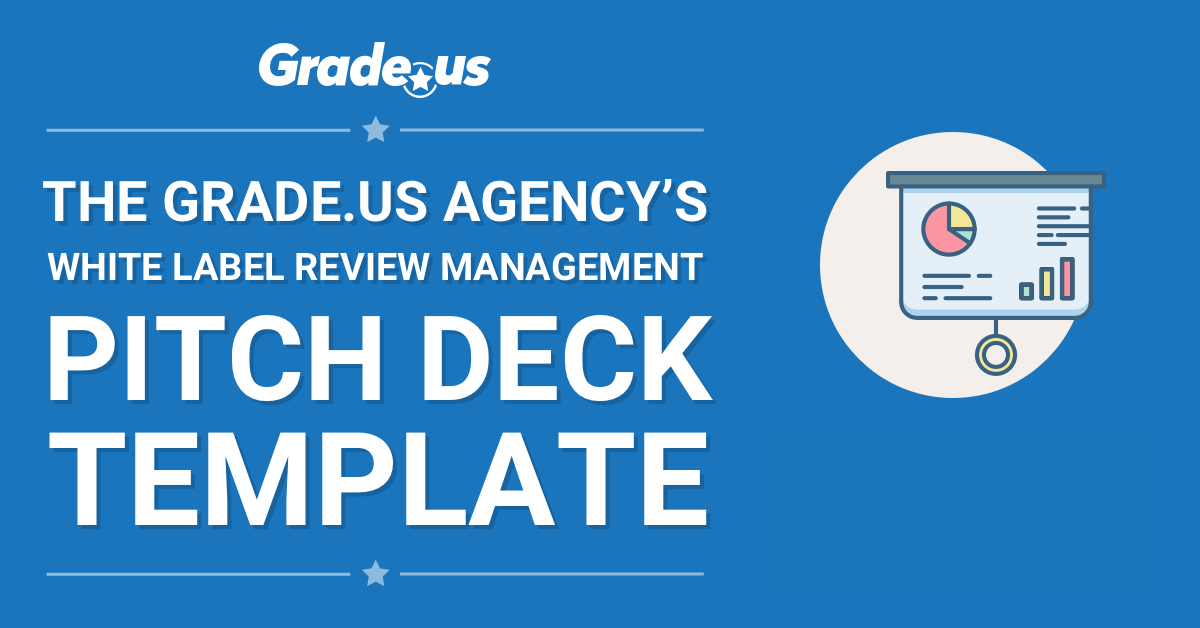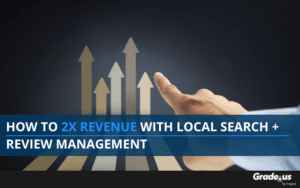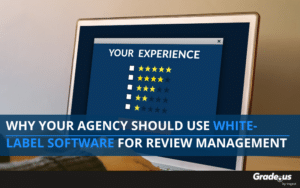It's incredibly frustrating.
A prospect decides they're interested. They're ready to hear your pitch or accept the proposal. So you do the right thing. You devote a considerable amount of your time, energy and resources to crafting your pitch.
How do prospects reward you?
They ignore you. They glaze over during a presentation. They accept your proposal and then blow you off. Which prompts you to follow up. Your prospect's responses are even worse. They decide to ignore you completely.
What gives?
Prospects don't care about your pitch
They're not interested in your proposal.
They're not excited about the ins and outs of your service offerings. And they're certainly not interested in giving you a straightforward answer. They'd prefer to let you squirm.
Well that's not fair.
You're right, it isn't fair. Still, it's a scenario that agencies experience on a daily basis. It's frustrating, confusing and disorienting. Why bother to ask for something you're not interested in?
Because they can.
If you're interested in earning their business, you'll do what it takes to woo them. That's the attitude, right?
Let's be honest here.
Most agency proposals, most pitch decks are just terrible. That's part of the problem. If your prospects are legitimately interested they're searching for you. The diamond in the rough.
If you're unremarkable, your pitch gets canned
There's only one alternative.
Want prospective clients to take you seriously? Your pitch needs to be amazing. Not good or even great but consistently amazing.
How do you do that?
It seems like it's hit or miss. It's really pretty subjective, isn't it? Prospects either like your pitch or they don't. There doesn't seem to be a whole lot of in between there. How do you create an amazing pitch each and every time?
That's easy.
You discuss their favorite topic. Them. Your prospects, like everyone else, loves to talk about themselves.
People spend, on average, 60 percent of conversations talking about themselves. That number jumps to 80 percent when we communicate via social media platforms. We do it because it feels great.
Your prospects are no different.
They want your focus to be placed squarely on them. They're looking for detailed yet concise information from you. They want to know that: (a.) You've done your homework, that you understand their problems intuitively (b.) That you have a solution to solve their problems and (c.) That you're willing to flatter them/allow them to save face.
Complicated, right?
How on earth are you supposed to do that? Do you even want to? It sounds like a lot of unpleasant work. It's actually the opposite. Creating amazing pitch is simple, if you have the right ingredients.
An amazing pitch is offensive
You mean... It's rude or inappropriate?
No, not at all.
I'm not recommending that you create a rude, aggressive or inappropriate pitch. I'm not advocating that you violate social or ethical norms. Don't be a jerk.
Okay...
I'm recommending that you tell the kind-yet-unpleasant truth. Remember earlier, when I mentioned it's important to allow your prospects to save face? This is why. You'll need to give your prospects bad news.
They expect it.
A successful pitch or proposal is one that refuses to pander. Yes, it's wise to protect your prospects ego. But it's also important that you show them where they're going wrong and where their choices are taking them.
What does this look like?
- They’ve been passed by a competitor
- They’re losing traffic due to no/low/negative reviews
- Their per lead costs are skyrocketing
- Their customers secretly hate them
- Their standing in the community isn’t as positive/solid as they thought
- They’re struggling to generate leads
- The local community is growing yet their business continues to shrink
"Well this is awkward."
When you tell the kind-yet-unpleasant truth that's usually how it feels. But this is also what motivates prospects to take action.
Why is that?
It's loss aversion. As people, we tend to focus more on avoiding losses than making gains. Our negative bias means bad news is more appealing to us than good news. It's the unpleasant truth we do our best to avoid. Lead with benefits and you're far more likely to lose.
What does this mean?
It means you lead with a problem (or something remarkable) you can solve. It's a fundamental part of how we buy. How would you go about doing that? You do it in a way that's difficult to deny. You...
- Conduct a series of interviews with notable influencers in your community (25 to 500 depending on your niche). You get video or audio interviews where these influencers share honest feedback.
- Uncover secret information. Maybe your competitors are paying people to write negative reviews on their profiles. Or, you uncover an unpleasant (and unprofitable ) rumor floating around the community.
- Provide access to a network of influencers and essentials and you can generate a significant amount of positive reviews and press on your behalf. Offer valuable connections to key power brokers.
- Identify loss triggers, e.g. the motivating factors that encourage customers to leave your prospects. The areas of their business that trigger more negative reviews. The scorned influencers working against their brand.
See what we did there?
We've identified the information your prospects want but don't have. This information takes work to acquire. This is the kind of information that attracts your prospect's immediate and undivided attention.
What happens next?
Your amazing pitch quantifies their loss
This may feel theoretical.
Your prospects have been rocked by the information you shared with them so far. They may be emotionally out of sorts. The vast majority of prospects will have two distinct responses.
- Denial. These prospects will attempt to rationalize away the undeniable data you’ve just shared. If you’ve done a good job, influencers (customers, local connectors and community leaders, etc) have outlined their problem.
- Distance. These prospects will run. The problems you’ve outlined scare them. It’s too much, too fast. Running is an automatic response, a way to avoid dealing with the problem.
Numbers make it real.
You need to quantify their loss. How do you do that? You run the numbers. You focus on two specific metrics:
1. Lost revenue. The revenue your client has lost as a result of no/low/negative reviews.
2. Earned revenue. The revenue your client has gained as a result of positive reviews.
I cover these ROI calculations/metrics in detail here. Feel free to copy the research, formulas and data from this post in your pitch.
This makes it real.
In your pitch you want to provide prospects with prudent, conservative and aggressive numbers. You want to break things down, showing them how you plan to accomplish these results.
Your pitch needs a compelling risk reversal
There's an implicit message here.
Did you see it?
(1.) You provided prospects with compelling data. This data outlines their problem, the extent of the problem and the consequences of ignoring the problem. If your prospect is serious, you have their complete and undivided attention.
(2.) Ignoring the problem comes with significant risks. If your prospect ignores the problem they court disaster. You're not overselling disaster here, you're stating the facts.
We've arrived at the million-dollar question. Why should your prospect choose to work with you?
(3.) Working with you is risk-free.
Any decision your prospect makes comes with risk. If you want to win the sale you'll need to reduce (or preferably) eliminate those risks.
But how?
There are a few simple strategies you can use to do that. You can do that with...
- Warranties. A promise to rectify, replace or renew (e.g. we’ll bury any unfair reviews. They’ll stay buried or we fix it free of charge).
- A guarantee. You provide your prospect with a guarantee (e.g. we guarantee X results or your money back).
- An irresistible offer. You assume the risks upfront with a fantastic offer (e.g. work on contingency, one year contract after 3 months)
Make sense?
These aren't your only options, but they are the most compelling.
Your pitch shows prospects you eat dog food
Have you heard the term "dogfooding?"
It's another way of saying you practice what you preach. In this context, it means you show prospects your review portfolio. You behave transparently, showing them the good and the bad. You give them the opportunity to hop on a live call with a current client.
You share case studies.
You share testimonials, showing prospects you know what you're doing.
You're candid.
Next, you're focused on objections. You briefly cover a few of your prospect's most common objections. You give them the chance to ask questions, to raise additional objections.
You answer those one-on-one.
Have you caught the themes we've discussed so far? Loss, problems, solutions and risk? These themes were intentionally oriented around your prospects favorite topic. Me. Your prospects love to hear/talk about themselves.
There are lots of processes you can use to create a sales deck. These are the strategies and tactics I used to sell $25,000, $75,000, $90,000 and $125,000 contracts. They worked for my agency.
Now they can work for you.
Your prospects are ready for spam
... I mean general stats and data.
I typically provide a list of helpful stats and data at the end of my pitch deck. I let prospects know it's available for them to peruse on their own. It's data I encourage them to verify at their convenience.
Why not at the beginning?
Because your prospects, quite honestly, don't care. They want to know about their problems. About their issues, headaches and fears. They don't care about stats at first.
They care at the end.
When your prospects are close to making a decision they'll want data. They'll ask questions about your staff. They'll verify the data you share. They'll browse through your content, resources and downloads.
Here are some compelling stats you can use.
· 82% - 97% of consumers read online reviews
· 50% of all adults under 50 routinely check online reviews before buying new items
· 85% of consumers trust online reviews as much as personal recommendations
· 73% of consumers state positive reviews increase their trust in a local business
· Businesses displaying ratings and reviews experience average revenue uplifts of around 18%
· 49% of consumers need at least a four-star rating before choosing to work with a business
· Northwestern University's Spiegel research Center found reviews could increase conversion rates by 270%
· 30% of consumers list responding to reviews as key when judging a business
· 68% of consumers left the review when asked out of 74% total
· Google, Facebook, Yelp and the BBB are the most trusted consumer review sites.
· Each ratings star added on a Yelp review translated to anywhere from a 5% to 9% effect on revenues
· Consumers read an average of 7 reviews before trusting a business, up from 6 last year
· 44% of consumers say a review must be written within one month to be relevant
· 68% of consumers trust reviews more when they see both good and bad scores
· 95% of unhappy consumers return to your business if their issue is resolved quickly and efficiently
If they're delivered at the wrong time, stats = spam. Clients want to talk about their favorite subject first.
Themselves.
When they're delivered at the right time stats boost conversions.
See the difference?
Your review management pitch deck fails with the wrong timing
Prospects aren't always interested.
Some of them prefer to use you as leverage, to get a better rate from their current agency. Sometimes your prospect is a competitor, someone looking to steal valuable data. A few prospects are knowledge vampires. They'll drain as much of your knowledge and expertise as they can.
Then they'll vanish.
This is the part where you disqualify poor prospects. Here's how you do it.
You ask a question.
Two actually.
(1.) "Mr. Prospect, let's say I deliver the perfect pitch (or proposal). Let say I'm able to answer all of your questions, concerns and objections. Let's also say the price is perfect. What will you do next?"
There's really only one answer.
They're going to sign on the dotted line. Any other answer from your prospect and you're dealing with a waffler. Your pitch is probably going to fail.
(2.) "Mr. Prospect, can we set a time to go over the proposal together?"
There's really only one answer.
"Sure, I'm available on..." Any other answer from your prospect and you're dealing with, you guessed it, a waffler.
Give these wafflers a proposal, make your pitch to a non-committal prospect and you've just wasted your time. These two questions ensure that you work with serious and qualified prospects. This takes a significant amount of discipline. If you don't get the right answer to either of these two questions it's a good idea to walk away.
You're wasting your time.
If you're new to the agency game you're likely to resist. If you're an experienced agency you'll see the wisdom behind these two questions.
Your prospects don't care about your pitch
They care about themselves.
There's no need to devote a considerable amount of time, energy and resources to crafting your pitch. You don't need to write an exhaustive proposal.
You just need to ask two questions.
These questions expose your prospect's motives. They get to the heart of the matter. These questions expose your prospect's state of mind. With the right answers in place you have the ingredients, the structure you need to craft a compelling pitch or proposal.
Ask the right questions, create the right structure and you have everything you need to create a successful pitch, no frustration necessary.
About the Author
Andrew McDermott
Andrew McDermott is the co-founder of HooktoWin. He shows entrepreneurs how to attract and win new customers.









